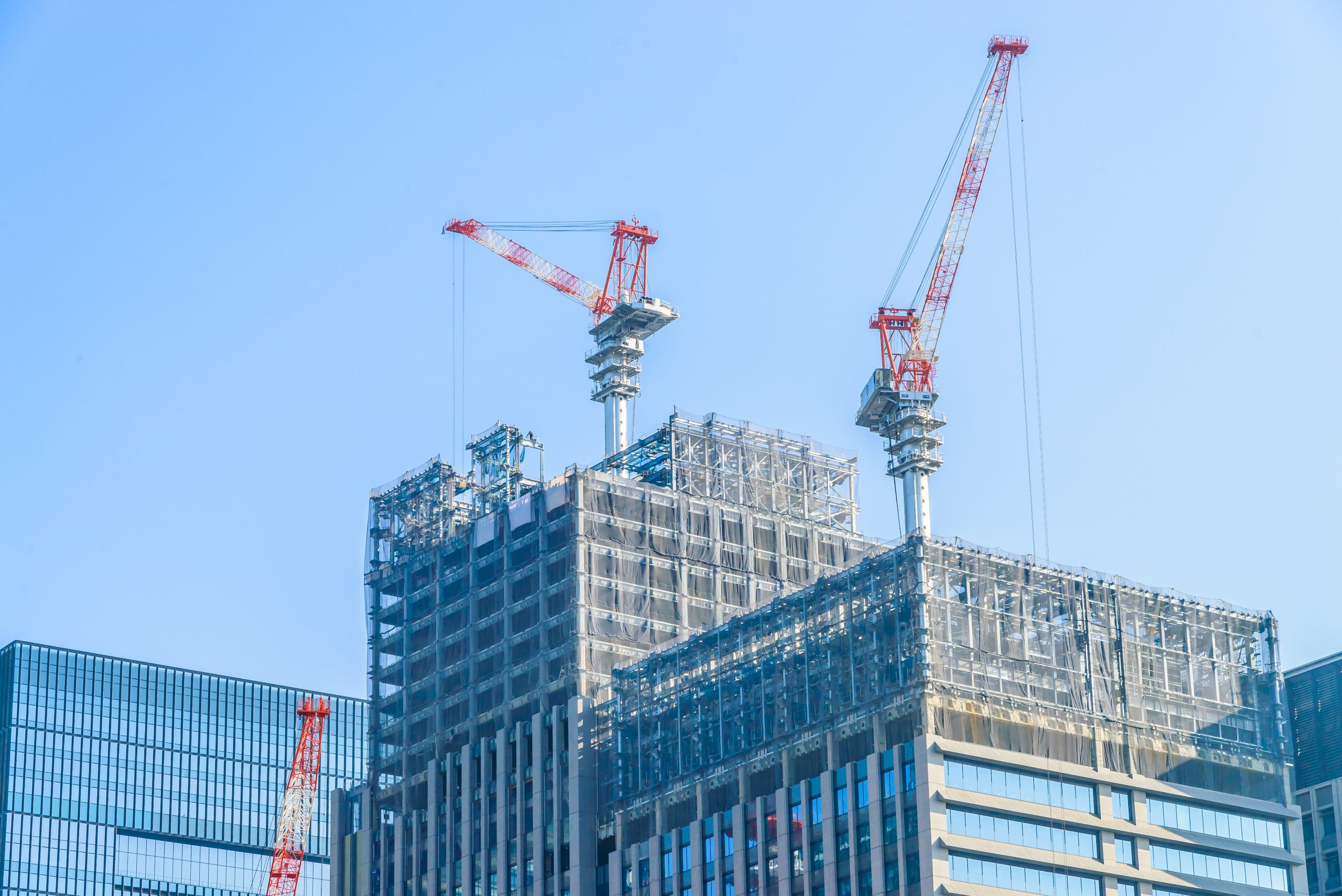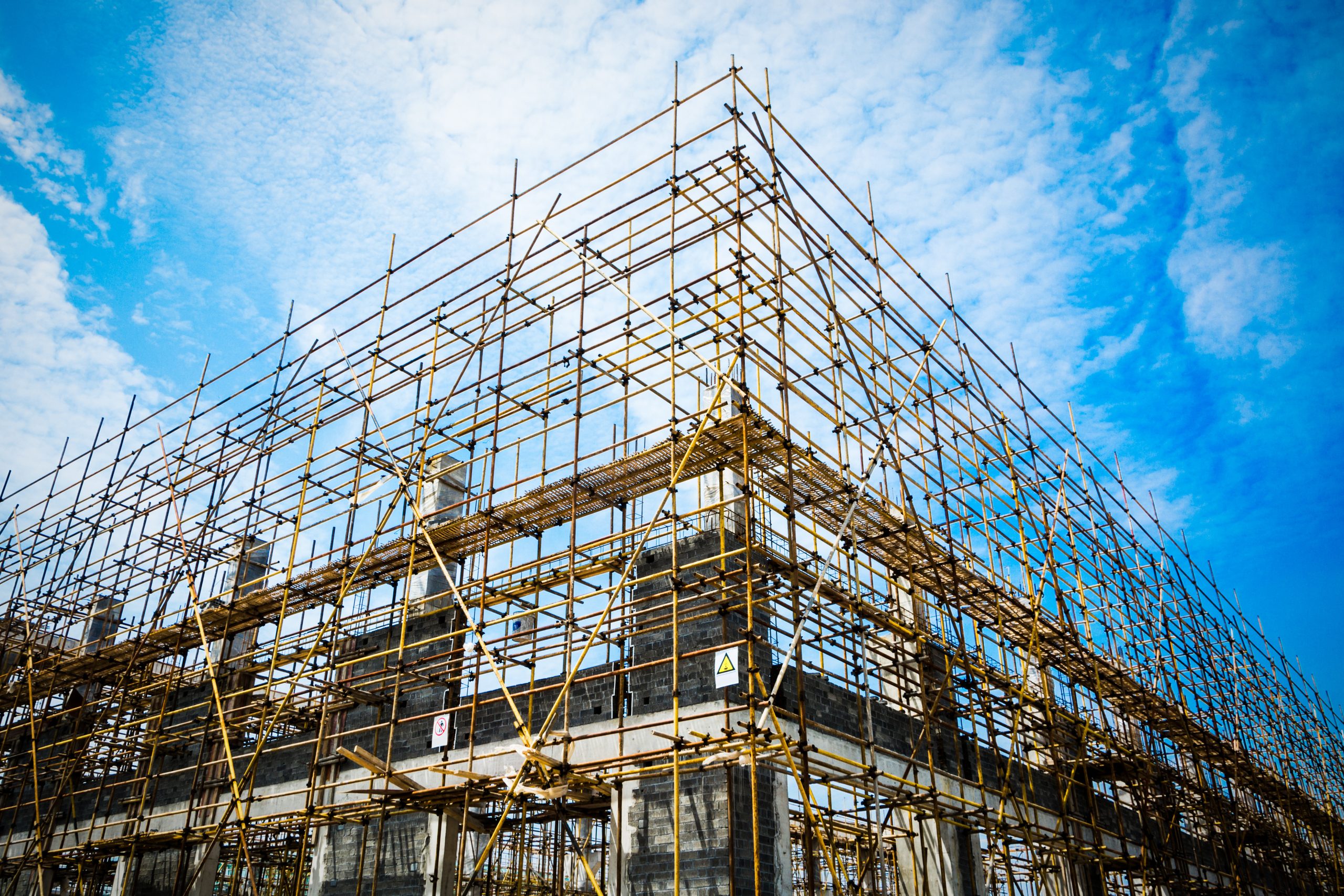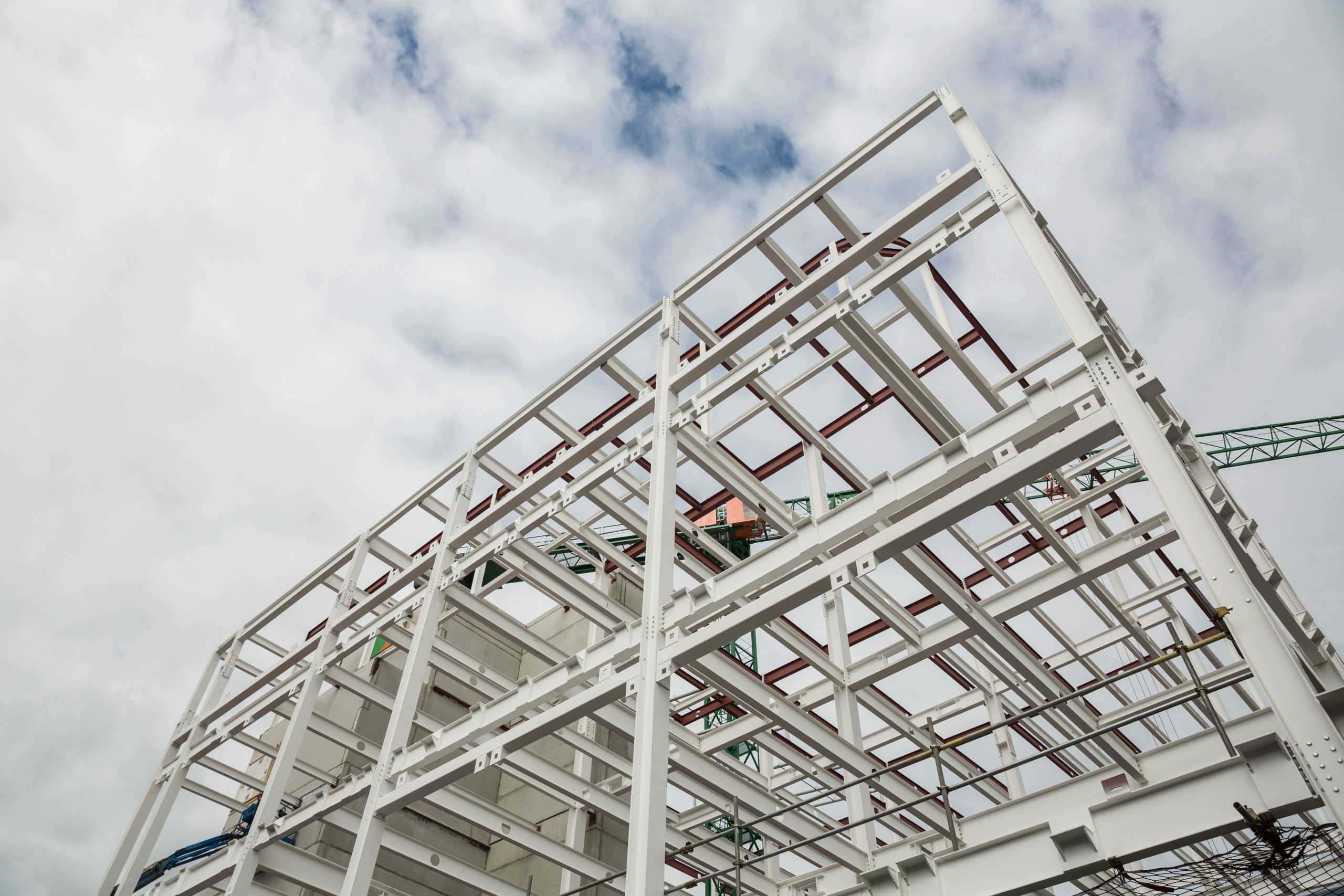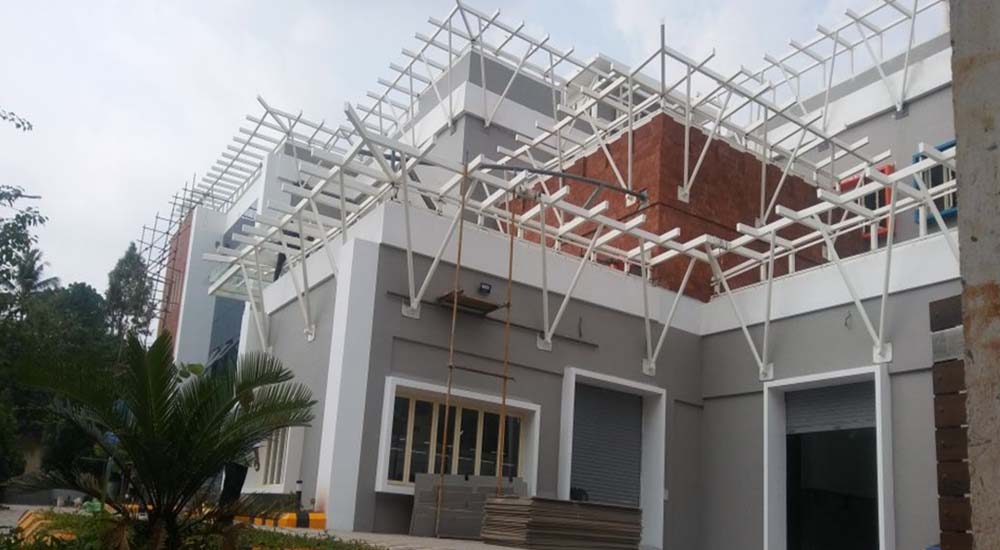Steel framework of a pre-engineered building under construction. Pre-engineered buildings (PEBs) are modern structures built from factory-made steel components. Each beam and column is cut and drilled off-site, then bolted together on-site, which dramatically shortens construction time and reduces waste. In Kerala – especially around Kochi, Aluva and Thrissur – these steel buildings are “increasingly popular” for everything from factories and warehouses to commercial and even residential projects. The result is a strong, durable building delivered much faster and often at lower cost than a comparable concrete structure. In fact, industry reports note that India’s PEB market reached about $1.84 billion in 2024 and is forecast to more than double by 2030. With advantages in speed, cost-efficiency and sustainability, pre-engineered steel buildings are rapidly outpacing traditional concrete construction in the region.
Steel vs Concrete: A Structural Showdown
Comparing the two approaches highlights why PEBs have the edge. Conventional concrete construction (cast-in-place or tilt-up) relies on heavy materials, on-site pouring and lengthy curing times. In contrast, a pre-engineered steel frame is delivered ready to assemble, so even large buildings go up quickly. Key differences include:
- Weight and Span: Steel frames offer very long clear spans. For example, a pre-engineered steel building can cover over 300 feet between supports without interior columns. In a concrete building, the weight of walls and slabs requires frequent columns and supports, limiting open space.
- Construction Speed: PEB components arrive prefabricated, so on-site assembly is fast. As one builder notes, a PEB’s “time-efficiency in fabrication and erection” is a foremost advantage. By contrast, concrete walls and slabs must be formed and cured on-site, which can add weeks or months. For instance, an indoor sports arena near Thrissur was constructed with a steel roof frame in half the time of a similar concrete build.
- Safety and On-Site Impact: Less on-site construction means fewer hazards. Steel PEB frames are assembled quickly with cranes and bolts, creating a cleaner worksite. Studies note that steel construction is generally safer during erection, since concrete work involves heavier materials and wet processes.
- Design Flexibility: Steel’s high strength-to-weight ratio allows custom shapes and expansions. Architects can design wide open interiors (ideal for factories, showrooms or gymnasiums) because steel beams easily carry loads over long distances. Modifications or future extensions are also simpler: new bays can be added by inserting more frames. Concrete’s rigidity makes late-stage design changes difficult.
- Resilience: Pre-engineered steel buildings perform well under extreme conditions. Steel flexes in high winds or earthquakes while concrete tends to crack or fail. A quality steel frame resists tropical storms and seismic loads effectively, whereas a similarly strong concrete structure would be much costlier. Fire resistance is also comparable or better: steel does not burn, and modern coatings can increase its heat tolerance.
By these measures, PEBs clearly outclass conventional concrete for many building types. They minimize structural dead-weight, accelerate schedules, and create versatile spaces – making them ideal for modern industry and commerce.
Key Advantages of Pre-Engineered Buildings
Close-up of complex steel framework in a modern pre-engineered building. Pre-engineered structures bring multiple benefits that make them attractive for today’s construction needs. As one supplier notes, the foremost advantage of a PEB is “time-efficiency in fabrication and erection” along with “value-effectiveness in material”. In practice, this means much faster builds with lower labor costs and minimal material waste. The key benefits of steel pre-engineered buildings include:
- Rapid, Cost-Effective Builds: PEBs are engineered for speed. Since components are precision-cut in factories, projects assemble in a fraction of the time of concrete construction. This faster schedule also reduces labor expenses. Industry experts conclude that PEBs are often “more flexible, cost-efficient, and quick” than traditional methods. For example, a concrete warehouse might take half a year to complete, whereas a similar steel PEB can often finish in weeks.
- Design Flexibility: Steel’s strength lets developers create large open layouts and accommodate specialized equipment. Clear-span interiors (up to 300+ ft) are routine, benefiting uses like warehouse racking, retail showrooms or recreational centers. Steel buildings also allow easy future expansion; new bays or mezzanines can be added by extending the frame. Custom roof shapes, clerestory windows or large overhangs are straightforward with pre-engineered components.
- Durability and Low Maintenance: Steel frames resist many issues that plague concrete. Unlike wood, steel doesn’t rot or host termites, and it endures weather extremes without cracking. A well-built PEB can last 50 years or more with very little upkeep. This long lifespan means fewer replacements and lower lifecycle costs. Many manufacturers emphasize that PEBs require “less maintenance” over decades, making them a smart investment.
- Sustainability: Pre-engineered steel construction is inherently eco-friendly. Factory fabrication wastes very little material – one study points out that steel PEB components are “custom-made… ensuring only essential material is used”. Excess scrap is minimal, and steel is highly recyclable (often 100% at end-of-life). In fact, current industry trends highlight steel’s recyclability and reuse as major green advantages. Steel PEB kits also often include insulated metal panels, which deliver excellent thermal performance and reduce energy use.
- Safety and Resilience: PEBs tend to have lower on-site risks. Steel parts arrive pre-cut, so there is less messy concrete work to slow progress or create hazards. Moreover, steel structures are engineered to withstand extreme events – for instance, many can resist winds over 200 mph – without catastrophic failure. Their ductility means steel bends and recovers in strong forces, enhancing occupant safety in storms or quakes.
These advantages make pre-engineered steel buildings an attractive choice for a wide range of projects. Commercial developers, industrial firms, and even institutional clients gain from shorter timelines, predictable costs and robust performance. Government and public agencies also favor PEBs for infrastructure and facility projects that demand fast delivery without sacrificing quality.
Pre-Engineered Buildings in Kochi, Aluva, and Thrissur
The shift toward PEBs is especially noticeable in Kerala’s major cities. Local construction markets have rapidly adapted to steel framing:
- Local Demand & Search: In Kochi, Thrissur and Aluva, online searches for “pre engineered building in Kochi”, “pre engineered buildings in Aluva” or even “new building construction near me” often list specialized PEB contractors. This reflects strong demand for steel-based solutions. Many developers and investors are finding that reputable PEB providers appear at the top of local search results, making it easy to find turnkey options nearby.
- Contractors & Services: Many of the best construction companies in Kochi (and Thrissur) now offer PEB expertise. Leading firms provide full turnkey construction company services – from detailed steel frame design and permitting to fabrication and on-site erection. These local builders have invested in the necessary equipment and training to handle steel projects end-to-end. By advertising PEB capabilities on their websites and in bids, they signal that steel framing is a core part of modern construction services.
- Manufacturers & Specialists: Regional PEB manufacturers have established a strong presence. For example, Tapco Smart Builders is noted as “a leading Pre-Engineered Building Manufacturer in Kochi”. Likewise, Lee Builders (based near Kochi) markets itself as a trusted PEB contractor serving Kochi and Thrissur. These companies combine advanced engineering with local know-how. By using locally made steel components and crews familiar with Kerala’s climate and regulations, they deliver high-quality buildings efficiently. In short, both building contractors in Kochi and building contractors in Thrissur now emphasize steel framing on par with traditional methods.
This local ecosystem means anyone in the Kochi region can capitalize on PEB technology. Investors and business owners can easily find qualified construction companies in Kochi to execute a steel building. Even for general public or residential projects, pre-fab steel modules are becoming an option. (Indeed, one industry report notes that “even modern residences are sometimes built using PEB modules” for faster construction.) The combination of skilled contractors, nearby manufacturers, and strong demand makes Kochi, Aluva, and Thrissur fertile ground for the PEB trend.
Choosing a Pre-Engineered Building Provider
When planning a new steel building, it pays to select the right manufacturer and contractor. Key considerations include:
- Full-Service Manufacturers: Look for firms that act as a true Pre Engineered Building Manufacturer, offering end-to-end solutions. The top providers handle everything from structural design to fabrication to on-site assembly and commissioning. For example, Green Brick Project in Kochi advertises integrated PEB services – they manage detailed engineering, procurement, project management and installation as a package. This one-stop approach reduces coordination headaches and ensures compatibility of all components.
- Proven Track Record: Choose contractors with experience in steel projects. The best builders in Kochi and Thrissur have portfolios showing completed PEB warehouses, offices or halls. Verify that their work meets standards (e.g. they use certified steel grades and precise connections). For instance, Lee Builders’ local website highlights its history of PEB projects, underscoring its reputation as “a leading PEB manufacturer” in the region. Reviewing case studies and client testimonials can reveal which companies deliver on time and quality.
- Turnkey Construction Services: Ensure the contractor provides comprehensive construction company services. This means they handle approvals, foundations, roofing, cladding, electrical and plumbing as part of the steel building package. Local PEB contractors often bundle these with the steel framing, so you don’t have to subcontract each phase. Check that they can coordinate finishes like insulation, facades and utilities to your specifications.
- Search & Keywords: When researching providers, use targeted search terms. Phrases like “Pre Engineered Building Manufacturer Kochi”, “building contractors in Kochi”, or even “new building construction near me” can surface specialized firms. Many local companies optimize for these keywords online, so this is a good way to identify reputable local partners.
By partnering with a qualified PEB manufacturer and contractor, developers and clients ensure a smooth project. The right team will maximize the speed, safety and quality that steel construction promises.
Conclusion
Across sectors, pre-engineered steel buildings are proving their worth. From developers and investors to government planners and the general public, PEBs deliver what concrete cannot: faster completion, lower total costs, and greater flexibility. One industry analyst sums it up: pre-engineered steel structures are often “the clear winner” in a head-to-head with traditional construction, thanks to their efficiency and resilience. In Kerala’s booming economy, cities like Kochi, Thrissur and Aluva have seen PEBs become the go-to choice for new projects. Even complex facilities – from sports arenas to industrial sheds – are now routinely built with steel frames to meet tight deadlines and budgets.
For businesses, developers and government bodies, this means future-proof construction. Pre-engineered buildings offer long-term value: durable steel frames that last decades, lower maintenance, and a smaller carbon footprint from reduced waste. As local experts note, well-designed PEB projects rank among the “best pre engineered buildings” for performance and sustainability.
In summary, whether planning a new warehouse, mall, school or office, decision-makers in Kochi, Aluva and Thrissur should strongly consider steel PEB technology. Its combination of speed, strength and cost-effectiveness is unmatched. By choosing skilled PEB manufacturers and contractors, commercial developers, residential clients and public agencies alike can build smarter, faster and greener – truly making pre-engineered steel buildings the future of construction in the region.








